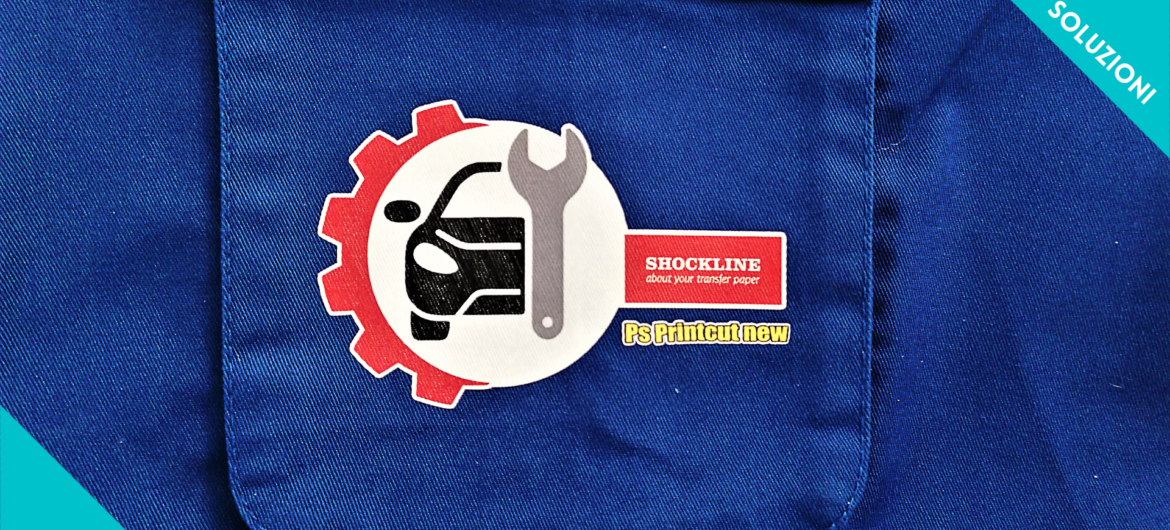In the field of customized workwear sector, when deciding which fabric printing technology to use, the choice often falls on embroidery or screen printing. This is because they are considered more resistant to washing and more durable compared to heat transfer films prints or printed labels made with solvent plotters.
The goal of this article is to dispel this myth. We want to demonstrate that digital heat transfer films prints, if made with due care, are absolutely comparable in terms of resistance to washing and longevity to customizations made with screen printing and embroidery.
Let’s discover all the benefits of heat transfer films prints made with printing plotters or print and cut plotters with solvent or eco-solvent inks.
Personalized work clothes, sportswear as well as all work uniforms for hotels and restaurants and personalized aprons are garments that require many washings and therefore, they require prints that are durable and resistant to washing.
But which are the most popular customization solutions for best washing resistance and durability over time? Certainly embroidery and silkscreen prints, and in some cases, customizations made with cutting plotter flms which however have the limit of being single colour. DTG printers are not taken into consideration, as they do not perform perfectly in case of technical fabrics for work clothes, which are often wide woven or have high percentages of polyester.
But as often happens, it’s not all smooth sailing.
Personalized embroidery, screen printing as well as prints made with a cutting plotter, if, on the one hand, ensure excellent performance in terms of resistance to washing and durability, on the other hand, they present significant limitations in terms of installation costs and clichés, choice of colours, attention to detail, high unit costs especially in the case of embroidery and long processing times for prints made with cutting plotters.
These limits are perfectly overcome by thermoadhesive labels printed with a printing plotter or a print and cut plotter with solvent or eco-solvent inks. They are, in fact, multicolored, soft, elastic, affordable and much more. Their sizes which are generally not too large help to make this choice even more profitable. Furthermore, digital thermoadhesive labels also resist to many washes and high temperatures, up to 90°C. Thermoadhesive prints also resistant to both abrasion and rubbing.
To understand these statements, just stop and focus on the elements that make up these thermoadhesive prints for workwear. Heat transfer labels for work clothes are made up of two layers: a white thermoadesive film and the inks.
Speaking of inks, our preference certainly goes to solvent and eco-solvent inks: they are among the best for creating customized workwear. We will imfilmstely explain why. Solvent-based inks have an exclusive characteristic: they have, as a matter fact, the ability to dissolve the substrate (the surface) of the thermoadhesive film to perfectly adhere to it. This establishes a deeper connection with the thermoadhesive film itself. And it is precisely the close link film/ink that gives thermoadhesive prints their resistance to washing.
It is obvious, however, that the thermoadhesive film must also be able to absorb the ink. In detail, it must be able to dissolve on the surface due to the action of the solvent ink and then close again, encapsulating the ink perfectly.
Therefore, a thermoadhesive film that allows for “heavier” inking will undoubtedly be a more absorbent film that will guarantee better washing resistance. This means that when choosing a heat transfer films for printing plotters or print and cut plotters you should not rely only on the brightness of the colours, as this alone is not enough to ensure that heat transfer prints for personalized workwear are resistant to washing. Before making your choice, you must first make sure that the colors are bright and the dark tones are perfect even with very high inking. In other words, to ensure that thermoadhesive prints are resistant to washing, do not save on ink but rather aim for intense and brilliant colors with an adequate-inking profile. Only in this way will you obtain perfectly inked and brightly colored thermoadhesive prints.
However, the color thickness of thermoadhesive prints is not comparable to the color thickness of screen printing or prints made with heat transfer cutting vinyl or even the thickness of embroidery thread. So how do thermoadhesive labels become as durable as the other printing and personalization technologies examined?
To give thermoadhesive prints durability, just protect them with a specific liquid solution that also allows them to increase their resistance to washing up to 90°C. And not only. The liquid protective, acting directly on the solvent and eco-solvent inks, also guarantees high resistance to abrasion and rubbing with oils and other solvents. This is an important benefit especially in mechanical workshops and other equally dirty work sectors.
The myth is finally dispelled!
When using thermoadhesives capable of absorbing colour, the adequate inks and the appropriate protection agents on overalls, uniforms, polo shirts, vests, sportswear and aprons you will certainly obtain digital thermoadhesive prints that are resistant to washing and absolutely durable.
To test and verify what is stated above, we recommend trying the print and cut thermoadhesive for solvent-ecosolvent plotters Flex Princut in combination with the liquid protector Proprint.






0 Comment